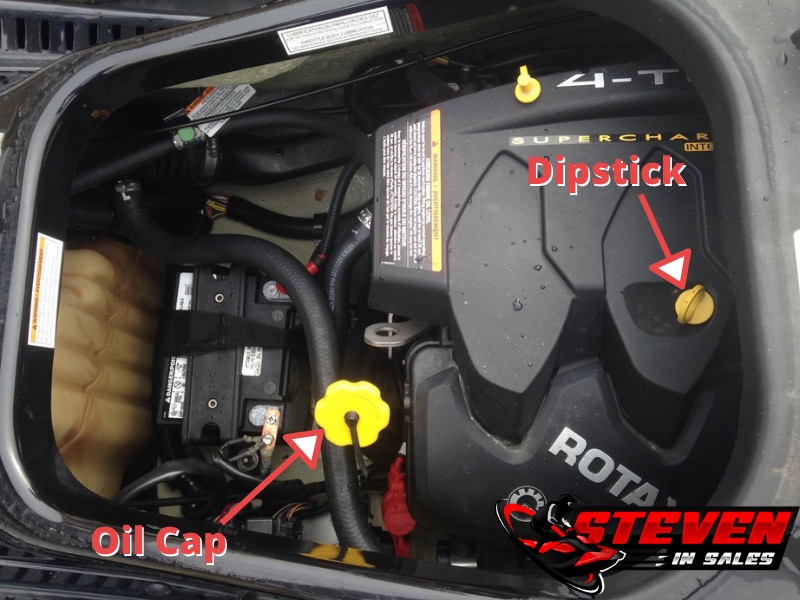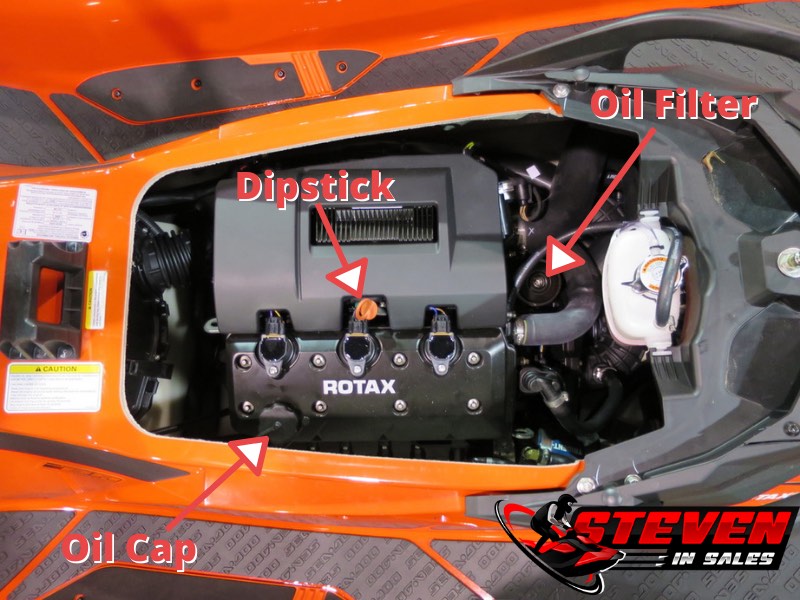Embarking on the open waters with the exhilarating roar of a jet ski beneath you is an experience like no other.
But to keep that adrenaline-pumping ride at its peak, proper maintenance is key. In this guide, we delve into the essential tips and tricks for maintaining your watercraft, ensuring both safety and longevity for countless adventures to come.
From engine care to hull maintenance, we’ve got you covered for smooth sailing ahead!
What You Need
Tip: All watercraft are metric; 8mm, 10mm and 13mm are the most commonly used sizes.
Here is most everything I usually get:
- Oil change kit. (Amazon Link Ad) This includes the engine oil, filter and o-rings. Some kits even come with spark plugs, which you should do too.
- E10 Torx socket, or a high-end 8mm socket will do.
- Extractor: The long cylinder oil extractors (Amazon Link Ad) work the best.
- Rags.
- Funnel.
You need to make sure you get the correct weight, especially if it’s supercharged. The kits will list the models it’s made for, but otherwise consult your owner’s manual.

The Steps To Perform The Service
Before you start, make sure it’s out of water and be sure to level it.
Avoid doing it near the lake, boat slip, or hoisted above water.
There are EPA laws about servicing things near water, and the fine can be quite high.
Watercraft Journal made an excellent video for the 2018 Sea-Doo RXT-X 300 if you need a video:
1: Warm Up The Engine
You need to get the engine warm, a 15-minute ride will be enough to warm up the engine oil.
Another way is to run hooked up to the garden hose, as shown here. (Avoid running a Sea-Doo hooked up to the hose for over 2 minutes!)
2: Remove The Engine Oil
Once the engine is warm, you can remove the old oil through the dipstick using the extractor.
Make sure to remove the cap before removing oil, the cap is often “yellow”, “red”, or “black”.
When you put the hose of the extractor down the dipstick, you want to go all the way to the bottom and then back it out just a hair.
Tip: Skip electric pump extractors, go for manual pump ones with a long cylinder (Amazon Link Ad). They usually come with a tank that measures the extracted liquid, helping you know what to replace.
3 Quarts
A Sea-Doo holds a total of about 4.5 quarts of oil, but you’ll only pump out about 3 quarts, and that is fine.
When the siphon starts to sputter, remove the tube, insert the key, hold the throttle fully, and turn the engine for 3 seconds.
This puts the engine in “drown mode” and prevents it from starting.
Then, reinsert the tube and pump out more to extract the last little bit.
3: Replace Filter
Use an E10 Torx socket or 8mm socket to remove oil-filter cap bolt from the Sea-Doo engine.
When removing the old oil-filter, I like to set aside the new filter and use the box it came in to put the old filter in to cut down messes.
Make sure to seat the new oil-filter correctly (note the direction) put it the same direction you took it out!
4: Replace O-Rings
Replace the filter cap o-rings with new o-rings from oil-kit.
Note: The o-rings are all different sizes and thickness. So make sure you’re putting the o-ring in correctly!
Apply a little bit of new oil to the o-rings once you install the new ones.
Once you replaced the o-rings and inserted the new oil-filter correctly, you can add the cap back and tighten it down. Do not over tighten, you only want it to be snug.
5: Add New Oil
Use a funnel to add the same amount of new oil you took out, like 2.5 quarts if that’s what you removed.
It’s better to be slightly under than over, as adding more is easier than removing excess.
The extractors often have measurement lines to show you the amount you removed.
When you’re done adding, put the cap back and the dipstick too.
5 Seconds
Run the engine for 5 seconds, then turn it off, and check the level. You want the level to be between the two lines (humps).
If you have too much, you need to remove the little bit with the extractor out of the dip stick. If you don’t have enough, add more with the funnel at the cap hole.
Important: Do NOT overfill! You want to be middle of the “two humps” for the dipstick.
6: Check For Leaks
When the level is fine, button everything back up and run it attached to the garden hose for 1 minute.
- You want to check for any oil leaks.
- You also want to check the engine oil level after running it for a bit.
Note: The level of oil will be at a different spot when the engine is cold compared to a warm engine.
7: Replace Spark Plugs
Some kits come with spark plugs.
It’s a good idea to replace the spark plugs when doing a oil service. It’s simple to do and can keep future headaches away.
Avoid Fancy Spark Plugs
Do not use fancy spark plugs, stick to the NGK spark plugs that manufacturers recommends.
FAQs
How regularly do PWCs Need Their Oil Changed?
You need to do it every 50 hours or once a year, which ever comes first.
For more maintenance items you need to do, check out my maintenance post here.
Where To Dispose Of Engine Oil?
Many recycling centers, Walmart and Auto Parts stores will dispose of the old oil.
Many of those stores will also take the used oil filters.
Do 2-Strokes Need An Oil Changes?
Only 4-strokes need oil changes, the 2-Strokes burn what is added to them.
You’ll know you have a 4-stroke because it will have a dip stick located near the top of the engine.
Also, the last 2-stroke Sea-Doo made was in 2007. The first 4-stroke Sea-Doo made was in 2002. The last two digits of the VIN tell you the year it was made in.
Learn more about the difference of 4-strokes and 2-strokes here.
What Oil Should You Use?
You want to use manufacturer’s recommended oil.
The oils used differs somewhat from that cars. While others may have differing opinions, I strongly recommend adhering to manufacturer’s specified oil and filter.
Do You Need To replace The Spark Plugs When Changing Oil?
I recommend you do the spark plugs every year.
For many people, they only do the service once a year, so changing the spark plugs at the same time is smart.
I know some car guys may think changing the spark plugs on a personal watercraft every year is overkill, but trust me, it’s well worth it!
Is The First Oil Service Important?
The first oil change for your new watercraft is crucial.
When PWC is new, the engine generates tiny metal particles that end up in engine oil. Changing it soon prevents excessive engine wear due to these metal particles getting to the engine oil.
You can do your own first oil change, it’s not hard.
Most manufacturers don’t void your warranty if you do it yourself, but some dealers can be difficult about it (It’s easy money for them).
Depending on manufacturers, the first oil change interval can range from 10 to 50 hours. Check your owner’s manual for the specific recommendation. For me, I like to do it between 10 and 25 hours, whichever is convenient at the moment.

When getting oil level at right spot wouldn’t it go down when you check it later when engine is cool? If so, do we need to add more oil in it for the right level.
There is no need to add more oil after the engine has been sitting. Adding too much oil will cause running issues. If the oil drops a lot after sitting, then something is not right.
Okay. Thank ya